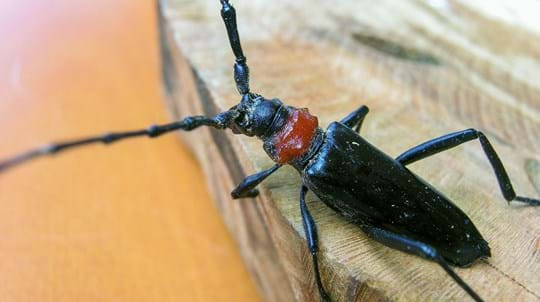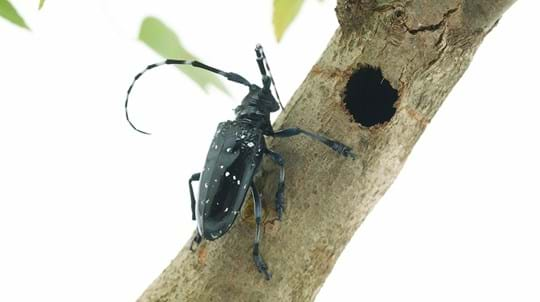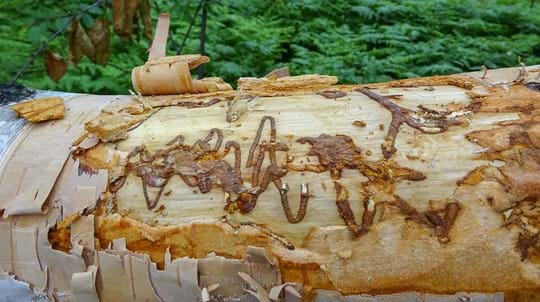
Credit: Konrad Wothe / naturepl.com
What happens to the tree?
In late spring to early summer when temperatures reach 11-16˚C, the male beetles start to fly in search of new host trees. When the male finds a suitable tree, it will bore a nuptial chamber into the wood and emit a pheromone to attract up to four females. The first mated female will bore a gallery lengthways towards the top of the tree to lay her eggs in, and all subsequent females will bore galleries down the tree with niches for each egg. They can produce between 30 and 80 eggs.
The damage happens when the egg hatches; the larvae widen and lengthen the egg niche and bore a pupal chamber where they will pupate under the bark surface. This seriously harms the channels that transport water and nutrients in the tree, causing dieback of the upper branches and in severe cases, the whole tree.
The beetle can also carry a pathogenic fungus which can discolour the timber and impact its commercial value.







